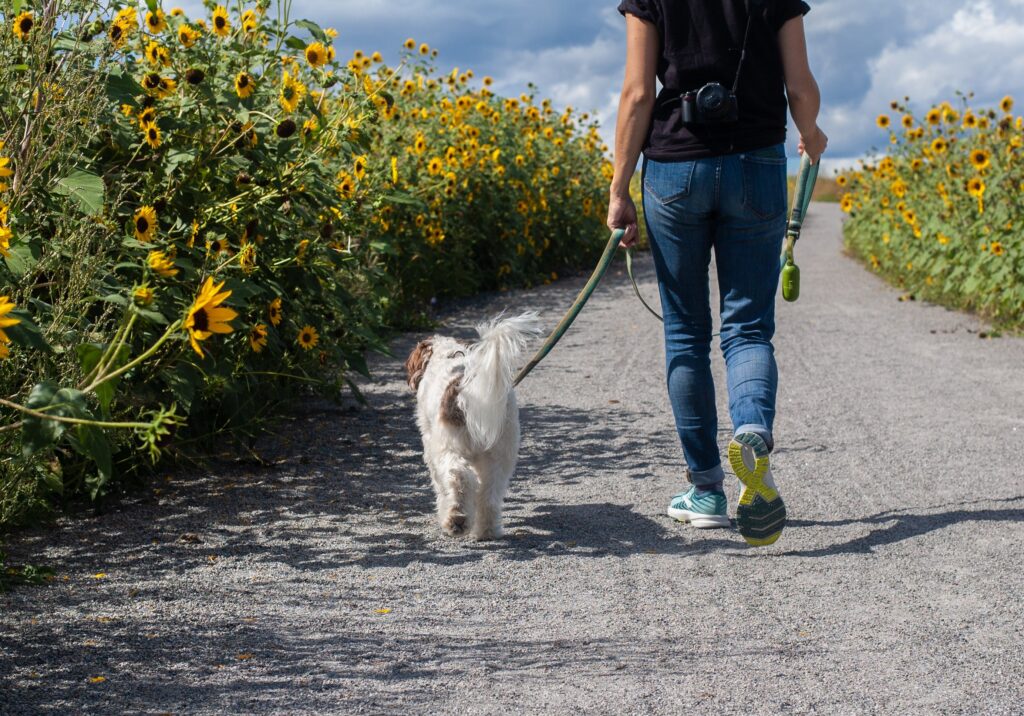It never ceases to amaze me how many people I see being pulled along by their dog while out “walking”. What amazes me more is that most of these people blame their dog for this behavior. If they only realized that the problem is on the other end of the leash. Dog leash training always falls on the owner as they are the “master”.
An Easy Command
If your dog pulls on the leash, you’re kidding yourself if you think you’re the “master”. Dogs are smart, and they will take advantage of a situation if you allow them to. The worst part of this situation is that it only takes a short period of time to teach your dog to heel and stop leash pulling. Leash walking with your dog is something that you should be doing every day, from the very beginning. As such, it only makes sense that the “heel” command is among the first that your dog learns.
Reinforcing Who Is The Master
When your dog obeys the “heel” command, not only does it make it easy on your arms while out on walks, it also helps ensure that your dog is safe and behaved while out in public. It also lets him know that you’re the boss, which is imperative in the human-canine relationship. And in those instances when a cat or other small animal runs out in front of you, the dog’s instincts will tell him to look to his leader for guidance (you) rather than take off. If the dog is leading you, then his instincts tell him to chase and you should follow.
As a dog trainer, I have been able to cure multiple problem behaviors by training the dog and his master on this one simple command. Such things as chasing animals, aggression toward strangers and dominant behavior toward humans are often curable. This is accomplished simply throwing away the retractable leash and teaching your pet to walk at your side, under your control.
For those unfamiliar with basic dog leash training, the function of the “heel” command is to have your canine companion walk alongside you, rather than in front of you. When a dog heels correctly, the leash remains slack, and Fido matches your pace, not vice-versa. Always remember “feet before paws”.
Start with a Short Leash
At this point, you’re probably saying to yourself “That sounds great. But I bet it’s a hard thing to teach.” Actually, it’s pretty straightforward, and like most dog training, it involves giving your dog a choice and letting him decide which he would prefer.
Start out by putting your dog on a short leash training. With the dog by your side facing in the same direction issue the “heel” command using a firm, yet gentle voice. Proceed to walk forward. If the dog responds by walking along with you, praise him with an enthusiastic “Good Boy” (or Girl). Consistency is important, and Fido needs to realize that he’ll get your enthusiastic praise when he displays the correct behavior. If your dog pulls, lags or doesn’t maintain position in the heel, you should correct him with a firm snap of the leash on his collar and vocalize your displeasure by saying “No”. Remember to always reward him when the desired action is carried out. If you’re lucky, a few repetitions of this series of actions will be all that’s needed to teach your dog to heel.
Not All Dogs Are Created Equal
With a little patience, this method will work well for many dogs. This will also help you to form a close bond with your pet. However, some dogs are a little difficult, and may be a little harder to train. This does not mean you’ve got a bad dog. It just means you’ll need to work a little harder to get the desired response. Repeat the exercise, and if your dog obeys this time, reward him with enthusiastic praise. Fido will quickly learn that to disobey the “heel” command results in a period of discomfort. Fido will also learn that walking alongside at your pace gets him a lot of rewarding praise.
It may take a few days, for some dogs it can take several weeks. However, if you are consistent in your dog leash training methodology, and reward him accordingly, Fido will soon be responding eagerly to your “heel” commands. Eventually the corrections will no longer be required. Keep in mind that your objective is to allow your dog to use his intelligence to train himself. You will provide your dog with the opportunity to either earn your praise (Good Boy!) or incur your displeasure (No). With patience, the choice will always be to seek your praise.

